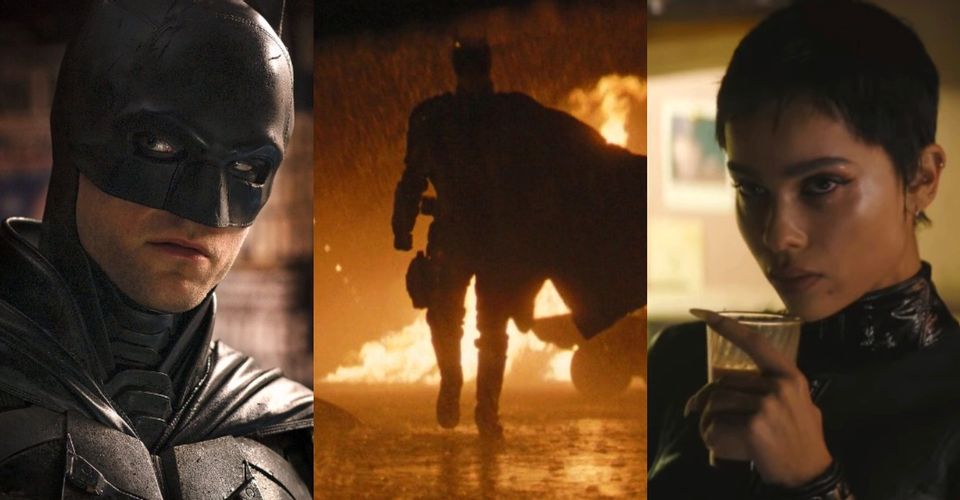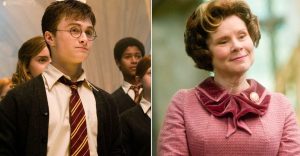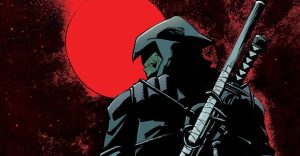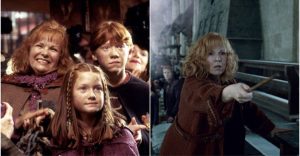The Batman: The 10 Best Superhero Movies Tropes, Ranked

Warning: This article contains spoilers for The Batman (2022)
Superhero movies are easily the go-to genre in the modern age of filmmaking, with The Batman’s massive success proving this notion. Robert Pattinson’s turn as the titular protagonist has been lauded by critics and fans alike for bringing in a gripping take on the crime surrounding Gotham City.
As with every other film in the genre, there are tried-and-tested tropes that can be found from one story to another. The Batman isn’t an exception, featuring plenty of superhero cliches that viewers are aware of. However, Matt Reeves’ direction adapted these elements so well that they deserve praise for the way the film ultimately benefited from their inclusion.
10 Red Herrings

The presence of multiple villains in superhero movies generally is the setup for red herring where the hero targets someone who turns out not to be the main antagonist. The Batman had the overarching question of who the mob rat was, with Batman going after Penguin.
After an extended chase, it turned out the Penguin had never been involved, effectively making him inconsequential to the main plot. The trope worked well here because Penguin is such a recognizable antagonist to fans that it was a genuine surprise when Carmine Falcone was revealed to be the real rat.
9 The Loyal Ally

It’s almost unheard of for a superhero movie to not involve the sidekick/ally trope since it’s an element that humanizes the protagonist. The Batman had James Gordon fill this role, being the only person in the law enforcement whom Batman could trust.
The trope was justified in The Batman due to how corrupt Gotham City was depicted, with just about every cop shown to be in with the mob. Gordon’s trustworthy presence allowed viewers to think of him as a safe place for Batman to be around. It also made them root for Gordon to take down The Riddler because he represented the incorruptibility of honest people in the legal system.
8 Bookends That Show The Opening In A Different Context

An easy way to portray the character development of the protagonist in superhero movies is to depict the same thing that happens in the opening during the climax. The reason for this is to show their contrasting mindset, with the hero changing their ways in the end.
The Batman had Bruce narrate how he’s changed Gotham during the opening sequence, claiming he was ruling Gotham by fear as Batman because that was needed. He narrated the ending as well, this time claiming he was wrong to cultivate a fearful image and had to be a symbol of hope. The bookend cliche is very simple, but it worked to perfection in The Batman to relay his thought process.
7 Surprise Villain Appearance

The conclusion of The Batman shocked more than a few fans when none other than The Joker appeared. The Clown Prince of Crime befriend Edward Nashton at Arkham in what was a debut that was by no means teased beforehand to fans.
It’s actually a trope that’s fairly common as a way to hype up for a prospective sequel. However, The Batman had shown so much carnage being inflicted upon Gotham City that viewers wouldn’t have expected things to get worse with Joker’s arrival. Not to mention that his status as the most popular comic book villain made it all the more worth including.
6 One-Man Army Protagonist

The element of the protagonist steamrolling through enemies is one of the oldest tropes in the book. There’s a reason why it’s so favored by directors, though, and it comes down to how well the heroes’ skills can be displayed. In Batman’s case, his power level was kept high to distract from the fact that he was playing right into Riddler’s plan.
Riddler acknowledged that he had no physical gifts to match Batman, which is why he turned to the use of concocting schemes to dole out his vigilantism. Batman had to come across as a powerhouse to drive home the idea that Riddler saw the Caped Crusader as the piece of the puzzle he needed to further his vigilante exploits.
5 The Femme Fatale

There are plenty of areas where The Batman improved upon Catwoman’s portrayal over Batman Returns, as Selina Kyle came across as more than just a challenge for the titular character. Here, Selina’s femme fatale quality was played straight into the plot, as she used her charms to infiltrate Falcone’s gang.
Moreover, Selina’s dangerous nature is what led to Batman acknowledging her as an equal since she didn’t back down even though she didn’t have the gadgetry that Batman enjoyed. The inclusion of the trope was also justified by the fact that Selina was shown to be adept at multiple fighting styles that she unleashed upon those who tried to eliminate her.
4 Villainous Monologues

It wouldn’t feel like a superhero movie if the bad guys didn’t go on long rants. Batman villains are the most prone to monologuing since they’re generally among the biggest schemers. Of course, Riddler being a cerebral foe made it natural that he should deliver chilling lines of dialogue.
The Riddler’s speeches improved upon the trope because each one of them contained hints about his real identity as Edward Nashton. His confrontation with Batman led to Nashton going on his longest rant, where he sought Batman’s approval and lost his senses when the latter rejected him.
3 Hero Becomes The Mask

Batman movies are the ones that have made this trope popular, as Bruce is shown to be so deep into the Dark Knight’s persona that he’s given up on his real personality. The Batman made this element as its primary backdrop, as the Bruce Wayne identity was barely present.
It played true to the film’s title, which promised the idea of Batman being a feared figure whom people don’t understand. Bruce used Batman as a way of doling out his vengeance upon criminals since his parents were killed by one. The Batman might be the film in the franchise that uses this most skillfully since it was the main arc for Bruce to go through.
2 Protagonist Emerges From An Explosion

The idea of cool guys not looking at explosions has been ingrained within viewers for several decades, and The Batman made use of it. This move is a classic in general, although the movie pushed it further by having Batman appear from within the flames to capture Penguin.
The reason why it worked so well was that Batman looked like a scary figure, going along perfectly with the overall horror feel of the movie. It made for a superb sequence where the Dark Knight was seen by fans as the way criminals perceive him, coming across as a terrifying being who endlessly pursued his targets.
1 Parallels Between The Hero And The Villain

Superhero movies in contemporary times have explored the notion of a connection between the hero and the villain based on their actions. The Batman splendidly incorporated this trope by showing the protagonist and Riddler to be two sides of the same coin.
Batman was horrified when he heard The Riddler’s goon repeat his motto of vengeance, realizing that the villain had turned to kill people after drawing inspiration from Batman’s own actions. The parallels served as eye-openers to fans as well, as it showed how Batman’s own brutality wasn’t right, and it left little to separate him from the bad guys.
About The Author


















